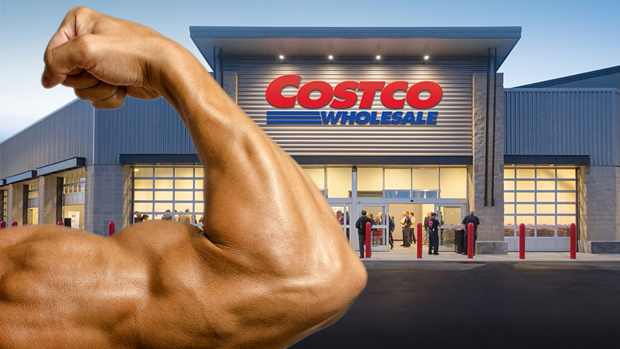Everyone's done it. You go to Costco to pick up some boneless chicken breasts and some toilet paper and you leave with a 72-pound wheel of cheese, 12 boxes of Nutter Butter cookies, a pallet of kitty litter, and a kayak.
It's easy to get swept up in all that raw capitalism, but if you can keep your cool and stay targeted, a lifter can pick up some great healthy or semi-healthy food items at Costco. Here are five of my favorite, off-the-beaten-Costco-path food items that I've grown to depend on:
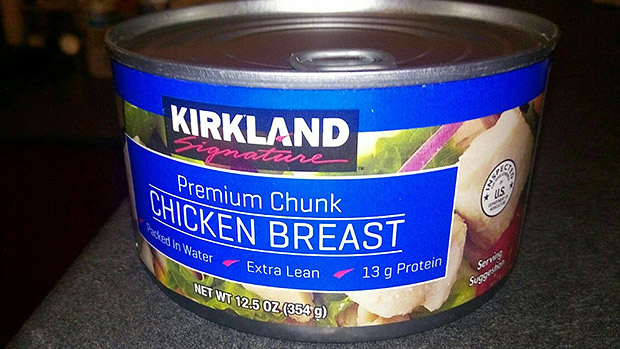
I know what you're thinking: It's just some chicken in a can, fat head. But hear me out because this is a fantastic find. Each jumbo-sized can (12.5 ounces) not only tastes great (it's seasoned with just a bit of chicken broth, which also makes it incredibly moist), but has nearly 46 grams of protein in it.
These are great for when you want to give yourself a super-hefty dose of protein but don't feel like making a shake or, for that matter, cooking up a dry chicken breast. I also use them whenever I want to drop a few pounds. I just open one up, drain it, dump it onto a paper plate, mix it with just a teaspoon of olive-oil based mayonnaise, and add a little salt.
It makes a great, low-cal, zero-carb lunch that tastes surprisingly good. After doing this for about a week or so, I find I've dropped about 3-5 pounds with virtually no suffering.
Then there's the phenomenal cost. If you were to buy comparably sized cans at the grocery store, they'd cost you between 5 and 6 bucks each, but Costco sells a six-pack of these bad boys for the amazing price of about 12 dollars – that's two bucks a can.
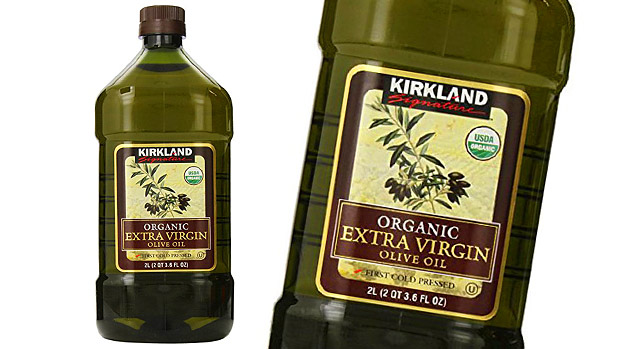
You might not have known this, but most olive oils you find at the grocery store are either counterfeit or woefully lacking in purity. There just aren't enough olive orchards around the world to meet the demand, so various manufacturers and distributors doctor up their olive oil with some sort of seed oil and add chlorophyll and beta carotene for color and odor.
The scoundrels figure that while some housewife in Idaho may be potato-savvy, she's olive-oil stupid and won't know the difference between high-grade olive oil and some stuff that was made with crankcase oil and Uncle Giuseppe's moustache trimmings.
A few years ago, the University of California Davis analyzed 186 extra-virgin olive oil samples taken randomly from shelves and found that 73% of them failed to meet the standards of purity established by the International Olive Council, and the extent by which they failed ranged from 56% to 94%.
Enter Costco. To address the shortage of orchards, they bought their own and now produce a really terrific organic olive oil. It's one of the few widely available brands in the US to actually meet the standards set by the Olive Council.
While it might not have the real strong, grassy taste associated with some of the European varieties, it's more-than-acceptable to most chefs. Samin Nosrat of Netflix's "Salt Fat Acid Heat" even included it on his list of recommended olive oil brands.
Best of all, the price is about 17 bucks for 2 liters, which is roughly 13% of the cost per ounce of one of Nosrat's other recommendations.
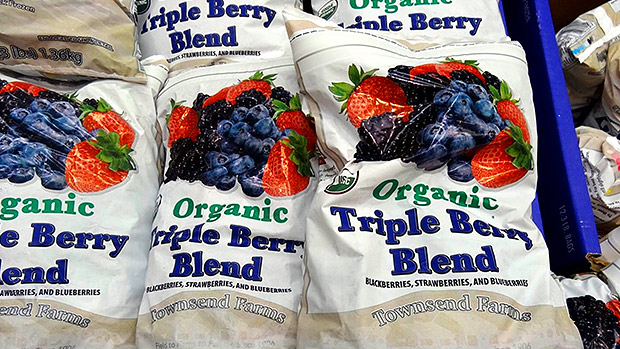
If you were to go to the grocery store and buy 3 pounds of fresh blackberries, strawberries, and blueberries, the check-out girl's gold digger instincts would kick in and she'd follow you home, thinking perhaps that your 2006 Toyota Corolla with the mismatched side panels was just a ploy to throw off fortune seekers.
That's how expensive fresh berries can be, but Costco sells this organic three-berry blend for about 11 bucks. But maybe you're thinking that you prefer fresh anyhow, since it's more nutritious than frozen. Not so.
A study conducted by Bouzari in 2014 evaluated the amount of riboflavin, beta-carotene, vitamin C, and alpha-tocopherol (vitamin E) in frozen and non-frozen carrots, corn, spinach, broccoli, peas, green beans, strawberries, and blueberries.
He and his colleagues found that frozen foods showed a minimal loss of vitamin C compared to big losses in non-frozen, "fresh" varieties. Likewise, frozen peas showed an increase in vitamin C and vitamin E over non-frozen, and the findings were true for fruits and vegetables even if they'd been frozen for 90 days.
In other words, as long as the "chain of freezing" wasn't broken – as long as the berries didn't melt when the other berry pickers had to pack Reuben's amputated finger with them en route to the hospital after it was cut off by the conveyor belt – they're often as good or better than "fresh."
Lastly, you couldn't pick a much better dietary and nutritional blend of fruits. All three are rich in anthocyanins and very low in total sugars.
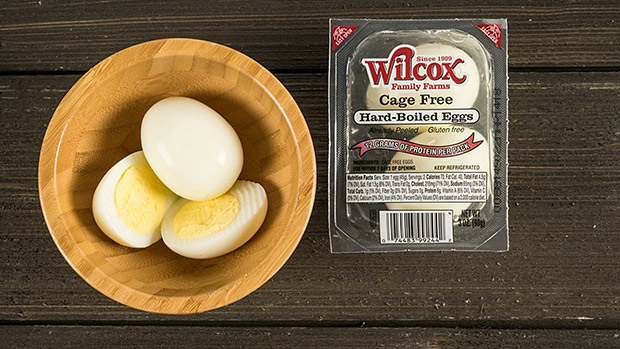
I can imagine the Wilcox Hard-Boiled Egg rep giving this pitch to Costco execs, only to be met with stony, perplexed, uncomprehending stares:
"See? They're hard-boiled eggs, but they're shelled, damn it, shelled! Plus look, they're in these nice pouches."
There must have been a lifter among those execs because someone saw the value of this product. It was likely he or she, like me, often goes to the fridge looking for a quick hit of protein and, not finding one, wishes we'd taken the time to hard-boil some eggs beforehand.
Enter Wilcox's eggs. There are 2 pre-peeled eggs in each pouch, which is a perfect serving size. Twelve packs sell for about 12 bucks. Betcha' can't make like Cool Hand Luke and eat 50 in an hour.
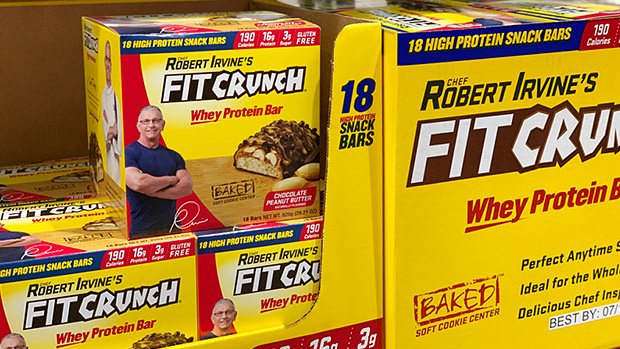
Make no mistake, this isn't a functional protein bar that provides sustained energy and protects against muscle damage. In fact, nutritionally speaking, Robert Irvine's Fit Crunch bar is pretty lame.
Each bar has 16 grams of whey protein, which is kind of low, and 8 grams of fat, which is kind of high, at least for an alleged protein bar. It only has 14 grams of carbs, though, through the liberal use of sugar alcohols and, in what's become a fairly standard attempt at nutritional virtue signaling, boasts of being gluten free.
Most of the ingredients are the same ones you'd find in just about any candy bar. A few years ago, hardly any self-respecting lifter would have touched this bar because of its nutritional inadequacies. Now, however, we're more honest with ourselves. Most of us just want a great-tasting bar that has a bit of protein in it that can give us at least the illusion of dietary piety, and that's exactly what Robert Irvine's bar is.
If someone had given me one of these without telling me it was a protein bar, I would have guessed it was just another sweet-tooth satisfying candy bar bought from the counter at 7-Eleven that'll soon be causing havoc throughout my circulatory system.
At about 17 bucks for a box of 18 bars, they're less than a dollar a bar. Use them only in emergencies. Not for the weak-willed who'll unwrap them, arrange all 18 in a row and mainline them.
Got any favorite Costco items to share?

